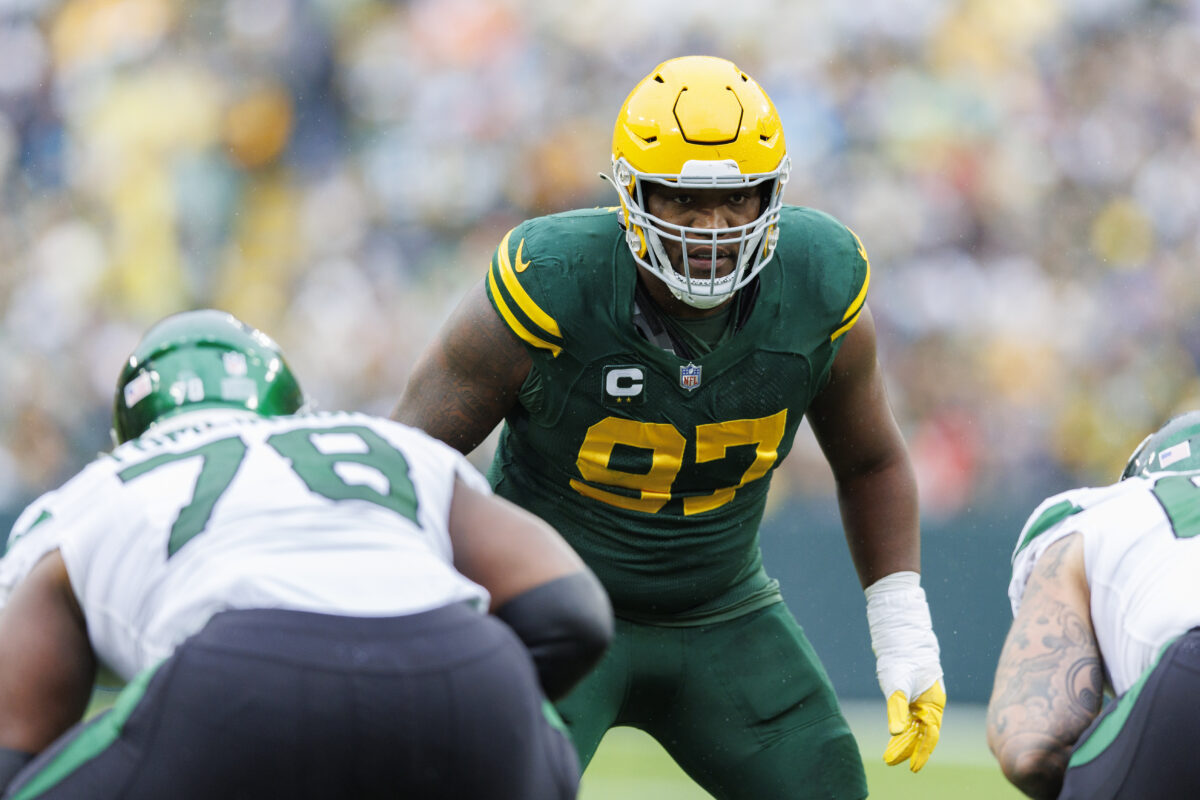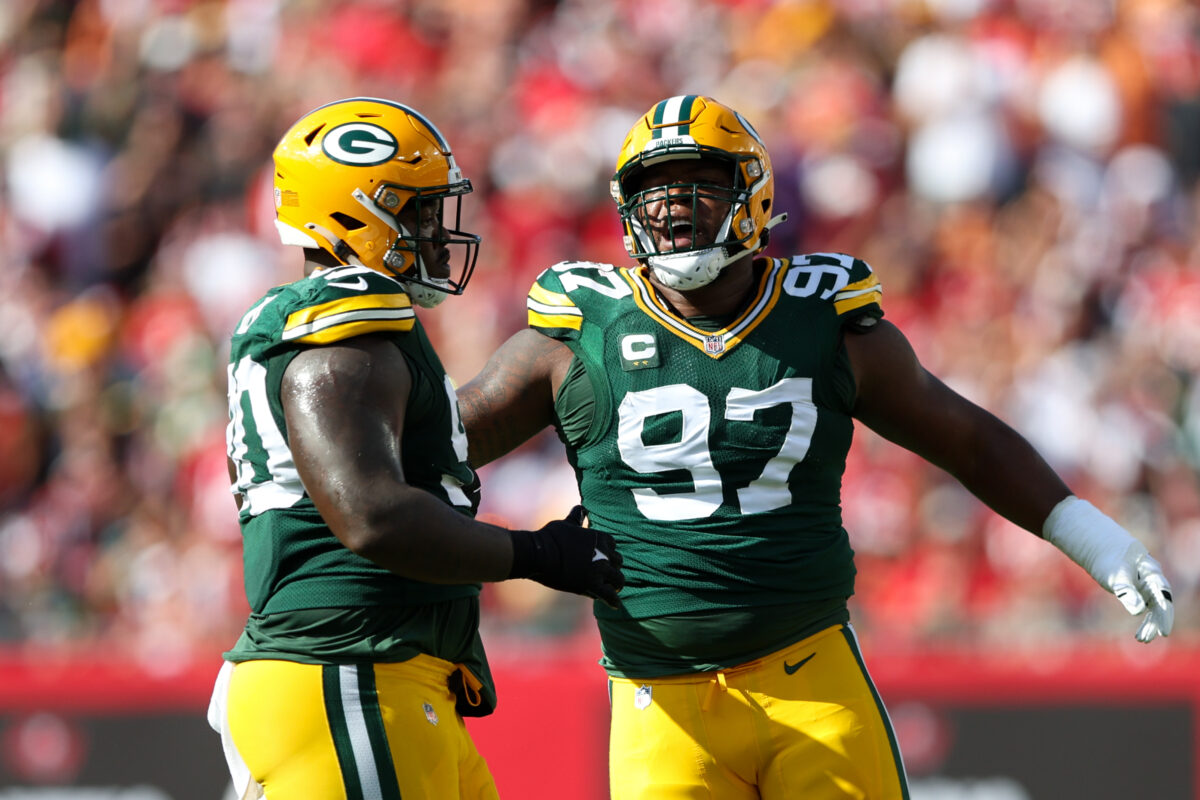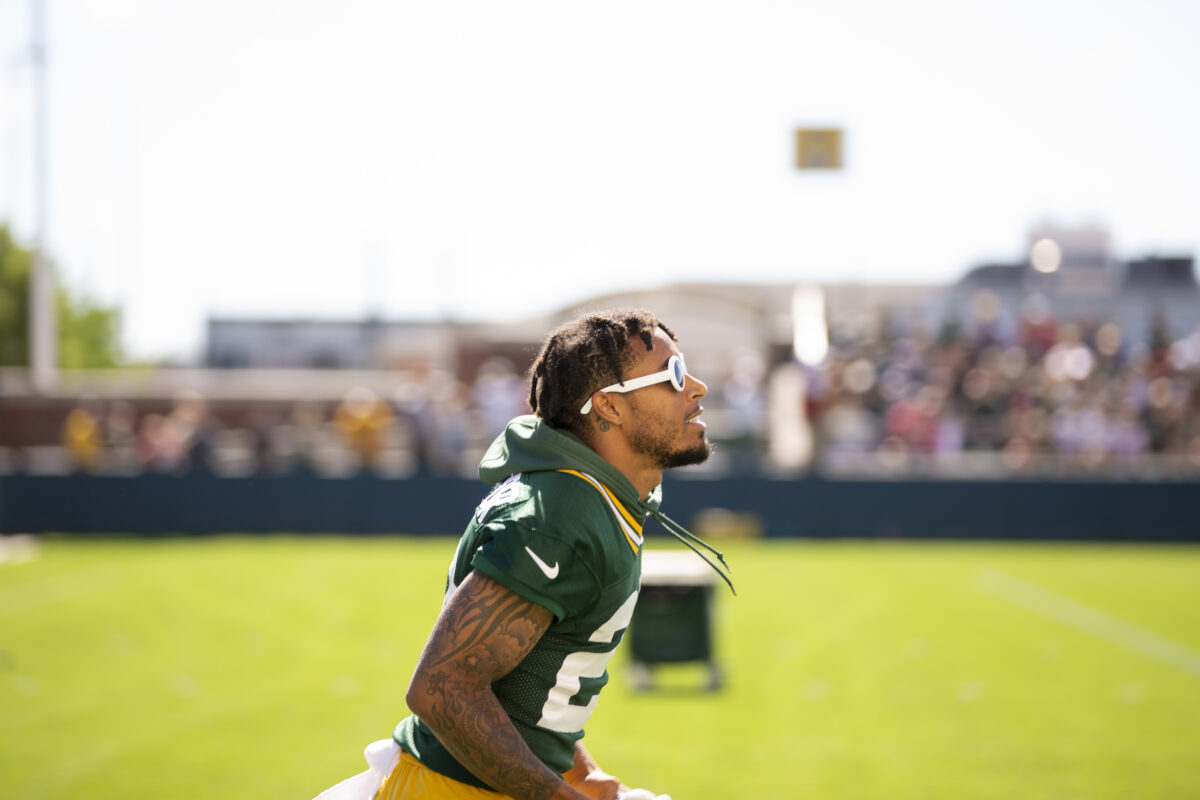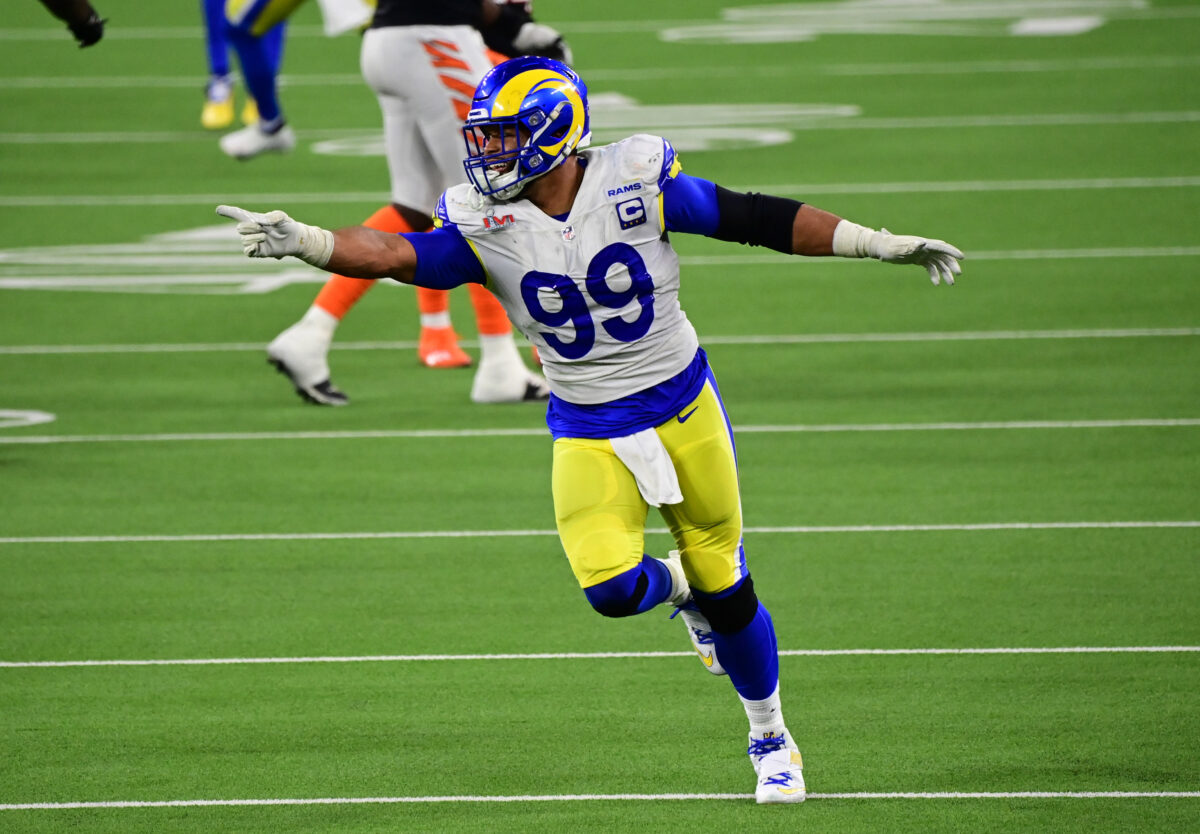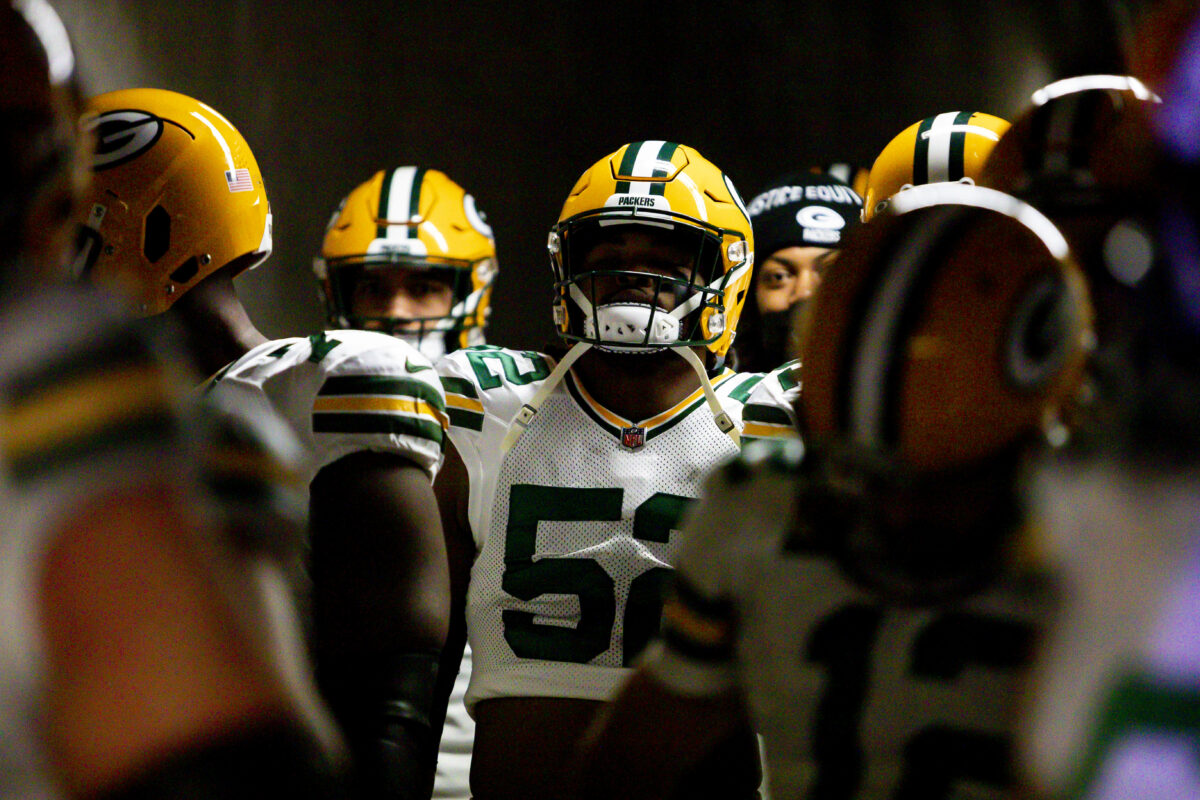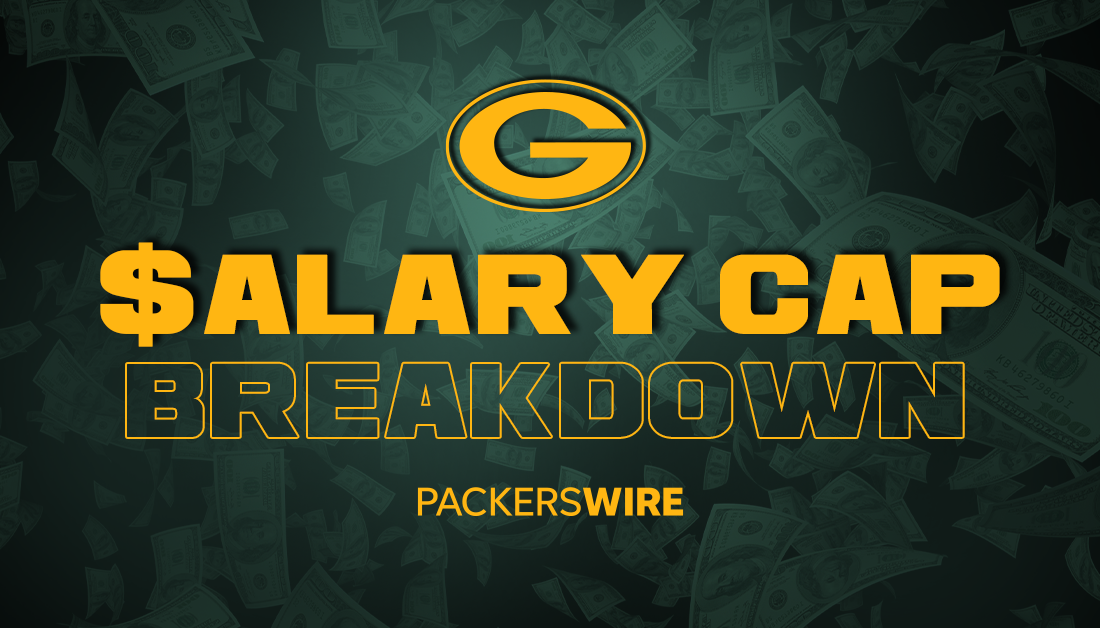“Get Kenny Clark some help!”
A phrase that I imagine many Green Bay Packers have said – or yelled – over the years.
Well, it appears that Clark finally has that help with what should be – on paper – the deepest and best interior defensive line room that the Packers have had in years.
Returning is Dean Lowry, who is coming off a career year in terms of quarterback pressures with 42, which ranked 20th among all interior defenders, along with four pass deflections. Lowry is often tasked with doing the dirty work defensively, taking on double-teams and occupying space, which often doesn’t lead to production, but his teammates can feel his presence.
Also returning is second-year player TJ Slaton, who was on the field for 266 snaps last season and could very well have a larger role in store for him this year. At 6’5″ and 330 pounds, Slaton will operate as an early down run-stuffer, lining up at either the 0 or 1-tech.
Defensive line coach Jerry Montgomery would say that he believes that Slaton can be a “dominant” run defender, while Matt LaFleur said that he is “lightyears” ahead of where he was a year ago.
Jarran Reed has been effective against both the run and the pass during his career – finishing with 30 or more pressures in three of his last four seasons while also ranking 26th out 143 interior linemen in PFF’s run-stop rate this past year.
First-round pick Devonte Wyatt is uber-athletic and would rank sixth out of all interior defensive linemen during his final season at Georgia in that same run-stop rate metric. Not to mention that with that athleticism, he is someone who can get after the quarterback as well.
Having a deeper and stronger rotation will greatly benefit Clark. For one, it will provide Clark with some additional snaps off, which isn’t a bad thing. During the 2021 and 2019 seasons – when he was fully healthy – Clark was on the field for 73% and 83% of the total defensive snaps, respectively. Even three to five fewer snaps per game will add up quickly over the course of a 17-game season.
Improved play inside will also afford the Packers more flexibility to move Clark around. For much of Clark’s career, he has been the one lined up in either the A or B-gap – in part because Green Bay had no other choice. This led to Clark often having to fight through double teams.
But now, with other capable defenders who can assume that role and that the offensive line has to be mindful of, Clark can slide out to the 5-tech, which will provide him with more one-on-one opportunities.
We saw more of this last season from Joe Barry, with Clark lining up over the tackle on 236 of his defensive snaps, according to PFF, the most of his career by a wide margin. It’s also not a coincidence that Clark had one of his most productive seasons as well.
However, it’s not only Clark who is going to benefit from strong interior defensive line play but the entire defense. The game of football has changed over the years, but games are still won and lost in the trenches.
Much like Clark having less attention on him, the same can be said for the Packers’ edge rushers, who will have fewer double-teams to contend with when there is more attention and a greater push from inside.
The linebackers will be kept clean while the interior defenders occupy blockers, allowing De’Vondre Campbell and Quay Walker to flow freely and with the ball – which should put them in position to make plays.
The Green Bay secondary will benefit from a strong interior push, which is the best way to wreck any play quickly. This will mean less time they have to cover and should also present them with more turnover opportunities with the quarterback under duress.
During the 2019 and 2021 seasons, the Packers ranked in the top six in interceptions. It just so happens that those years also coincide with two seasons in which Green Bay was among the best at pressuring the quarterback. But in 2020, as their total pressures would dip, so did their interception total. There is a bit of randomness that comes with turnovers from year to year, but more pressures will often lead to more opportunities.
Lastly, with a defensive front that can hold its own against the run, the Packers won’t have to devote additional defenders to the run game as often, in turn, better equipping them to play the pass with more players away from the line of scrimmage.
This will also make it more challenging for opposing offenses to decipher what is going on, as the Green Bay defense gives them similar looks from play to play while also creating more third and long opportunities where offenses will have to try to pick up chunk yardage against this Packers secondary.
So far, through the first few training camp practices, we’ve seen a lot of what was just discussed on display. The defensive front has been controlling the line of scrimmage by filling gaps, flying to the football, and generating consistent push into the backfield.
There is a lot of excitement around this Packers defense this season, and rightfully so. On paper, this could be one of the best units in the NFL, and that potential dominance begins up front with what should be a very deep and productive interior defensive line group.
[lawrence-related id=82519,82517,82515]
[mm-video type=playlist id=01eqbxb1xg7g19wqdc player_id=none image=https://packerswire.usatoday.com/wp-content/plugins/mm-video/images/playlist-icon.png]
